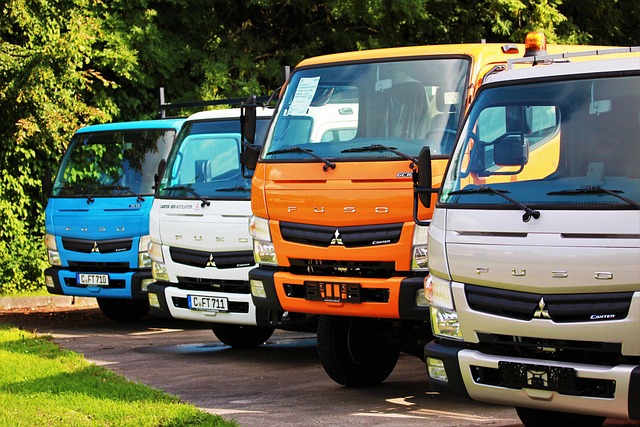Looking to register your car in California? This comprehensive guide walks you through the entire process, from understanding key requirements to securing your license plate. We’ll highlight the essential steps, including gathering vital documents, visiting the DMV, and verifying your vehicle’s unique Vehicle Identification Number (VIN) using a trusted dmv vin verifier. By following these straightforward instructions, you’ll be on your way to smooth car registration in no time.
- Understand California Car Registration Requirements
- Gather Necessary Documents for Car Registration
- Visit the DMV: Step-by-Step Process
- Verify Vehicle Identification Number (VIN) with DMV
- Pay Car Registration Fees and Receive License Plate
Understand California Car Registration Requirements

Before registering your car in California, it’s crucial to understand the state’s specific requirements. The California Department of Motor Vehicles (DMV) mandates that all vehicles operating within the state be properly registered and have a valid inspection certificate. This process involves verifying the vehicle’s identity through its unique Vehicle Identification Number (VIN). Utilizing a reliable DMV VIN verifier ensures accuracy and streamlines the registration procedure.
One efficient method to facilitate this verification is by employing a mobile VIN verifier or inspector. These services allow you to conduct a thorough check of your car’s history and specifications right from the comfort of your location. A mobile vin inspection provides an additional layer of convenience, ensuring that all necessary documentation is up-to-date and meets California’s stringent standards before submitting your registration application.
Gather Necessary Documents for Car Registration

Before heading to the California Department of Motor Vehicles (DMV), ensure you have all the required documents for a smooth car registration process. This includes your vehicle’s registration certificate from the previous state, if applicable, or proof of ownership, such as a bill of sale or manufacturer’s certificate of origin. Additionally, you’ll need your driver’s license and identification card, along with proof of insurance and current emissions test results.
A crucial step in this process is obtaining a valid Vehicle Identification Number (VIN) verification from a trusted source, such as a mobile VIN verifier. This service allows you to quickly validate the vehicle’s history, ensuring it has no outstanding issues or recalls. By using a mobile VIN inspection tool, you can save time and effort compared to traditional methods, making your DMV visit more efficient.
Visit the DMV: Step-by-Step Process

Visit the DMV: Step-by-Step Process
The first step in registering your car in California is to visit a Department of Motor Vehicles (DMV) office. Before heading in, ensure you have all necessary documents, including your current registration (if transferring from another state), proof of identity, and proof of insurance. You can also schedule an appointment online to save time.
Upon arrival, locate the appropriate counter for vehicle registration. A DMV representative will guide you through the process, which typically involves filling out forms and presenting your documents. They will verify your information, including the Vehicle Identification Number (VIN), using a DMV vin verifier to ensure the vehicle’s history is clear. If all details check out, you’ll be on your way to a successfully registered car in no time. For added convenience, consider a mobile vin inspection or mobile vin verification service.
Verify Vehicle Identification Number (VIN) with DMV

Before proceeding with the registration process, it’s crucial to verify your vehicle’s Vehicle Identification Number (VIN) with the California DMV. This step ensures that your car is genuine and eligible for registration. You can perform a VIN inspection using the official DMV tools, either online or through their mobile app, which checks against their databases to confirm the vehicle’s make, model, year, and other critical details.
A mobile vin verification service can also be employed, where a professional will come to you and conduct a thorough check of your car’s VIN by comparing it with the manufacturer’s records. This option is especially beneficial if you’re dealing with a classic or rare vehicle that might require additional documentation or inspections.
Pay Car Registration Fees and Receive License Plate

After completing your car’s registration application at the California DMV, the next step is to pay the required fees. These include the registration fee and a vehicle-specific fee based on your car’s emissions level. You can typically make payment online or in person at a DMV office. Once your payment is processed, you’ll receive your license plates – essential for legally operating your vehicle on California roads.
To streamline this process, many Californians opt for a mobile vin inspection or a vin verification service to ensure their car’s details are accurate and up-to-date before registration. This involves using a DMV vin verifier to cross-check the Vehicle Identification Number (VIN) with official records, providing peace of mind and simplifying the registration journey.
Registering a car in California involves understanding key requirements, gathering essential documents, and visiting a DMV office. By following these steps, including verifying the Vehicle Identification Number (VIN) with the DMV using a VIN verifier, you can ensure a smooth process. Once complete, you’ll pay fees and receive your license plates, officially making your vehicle roadworthy in the Golden State.
